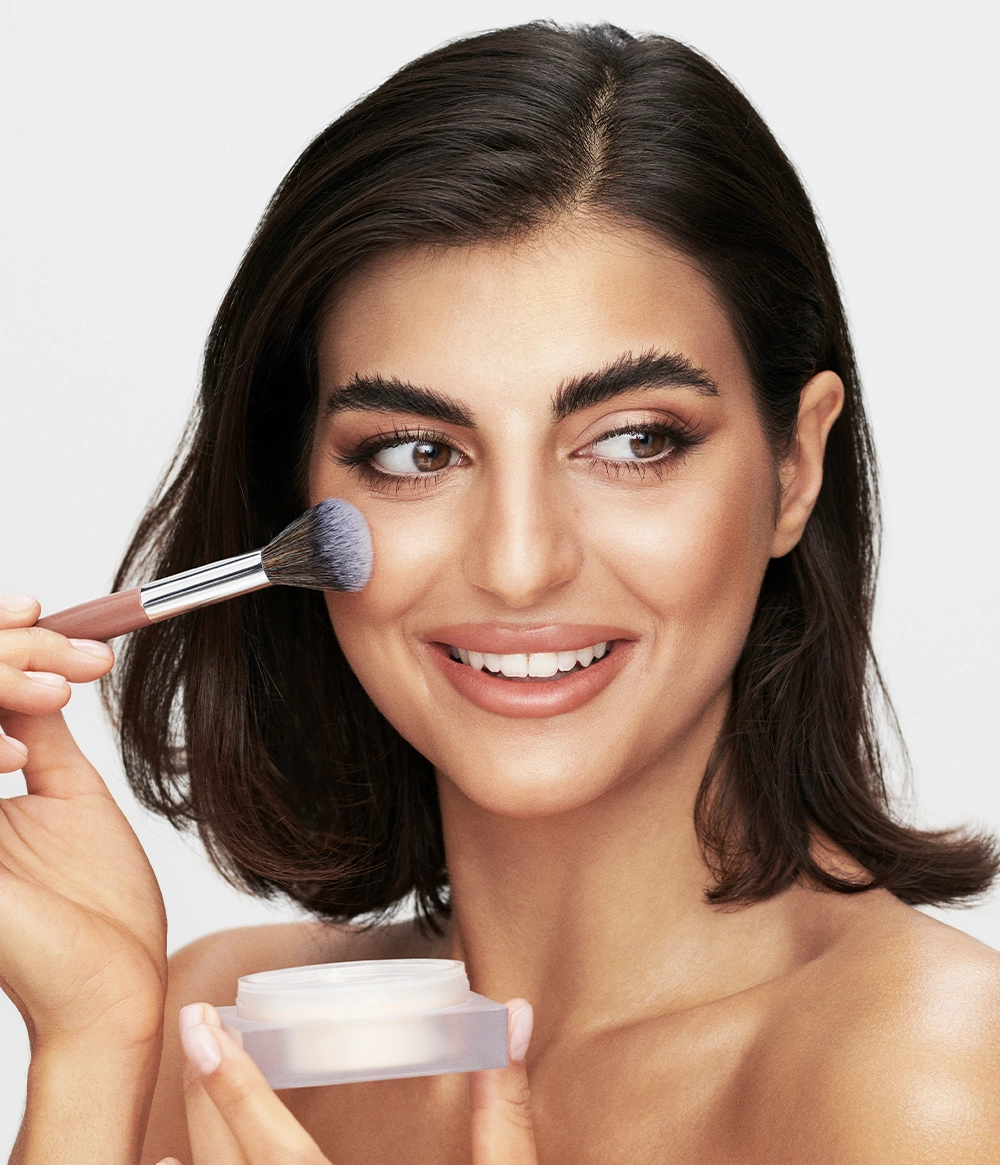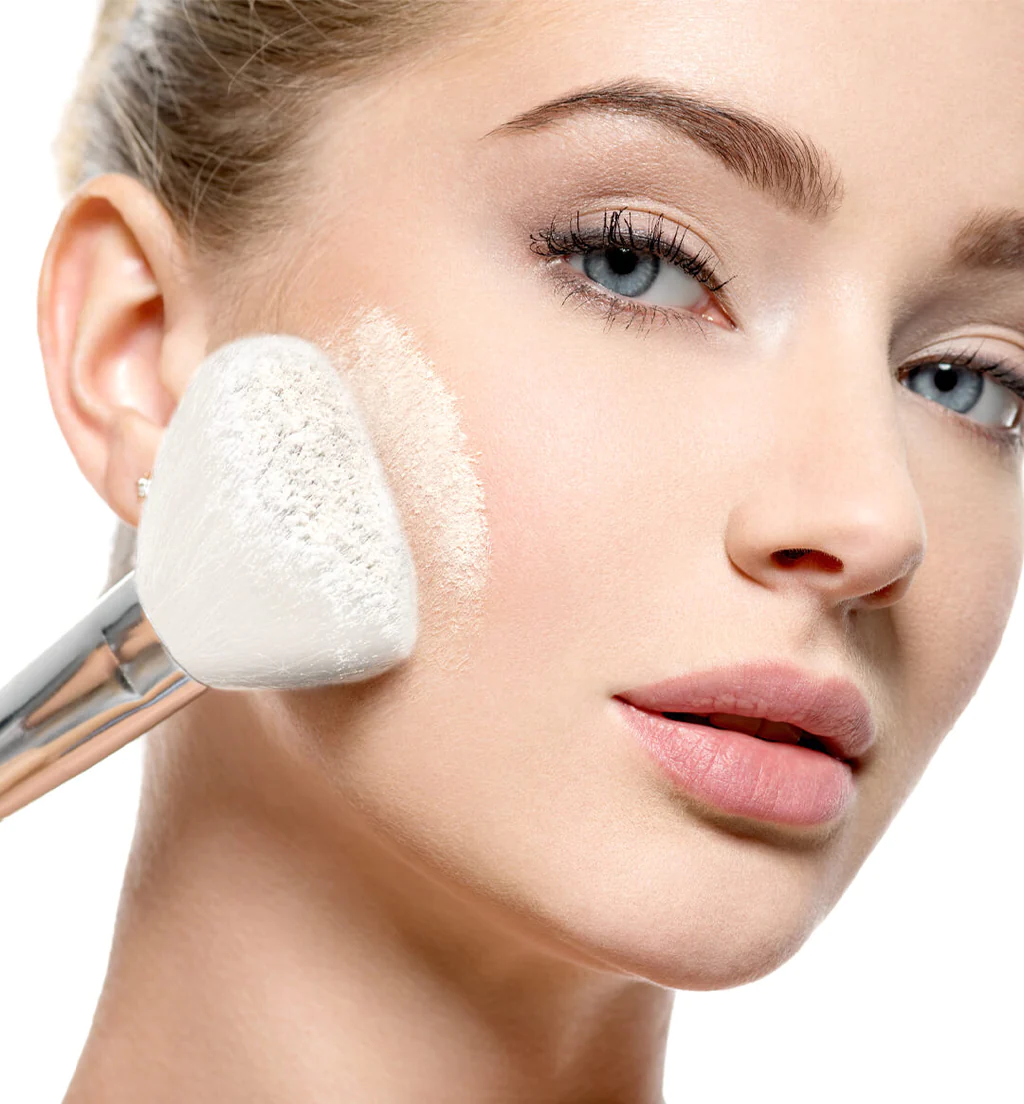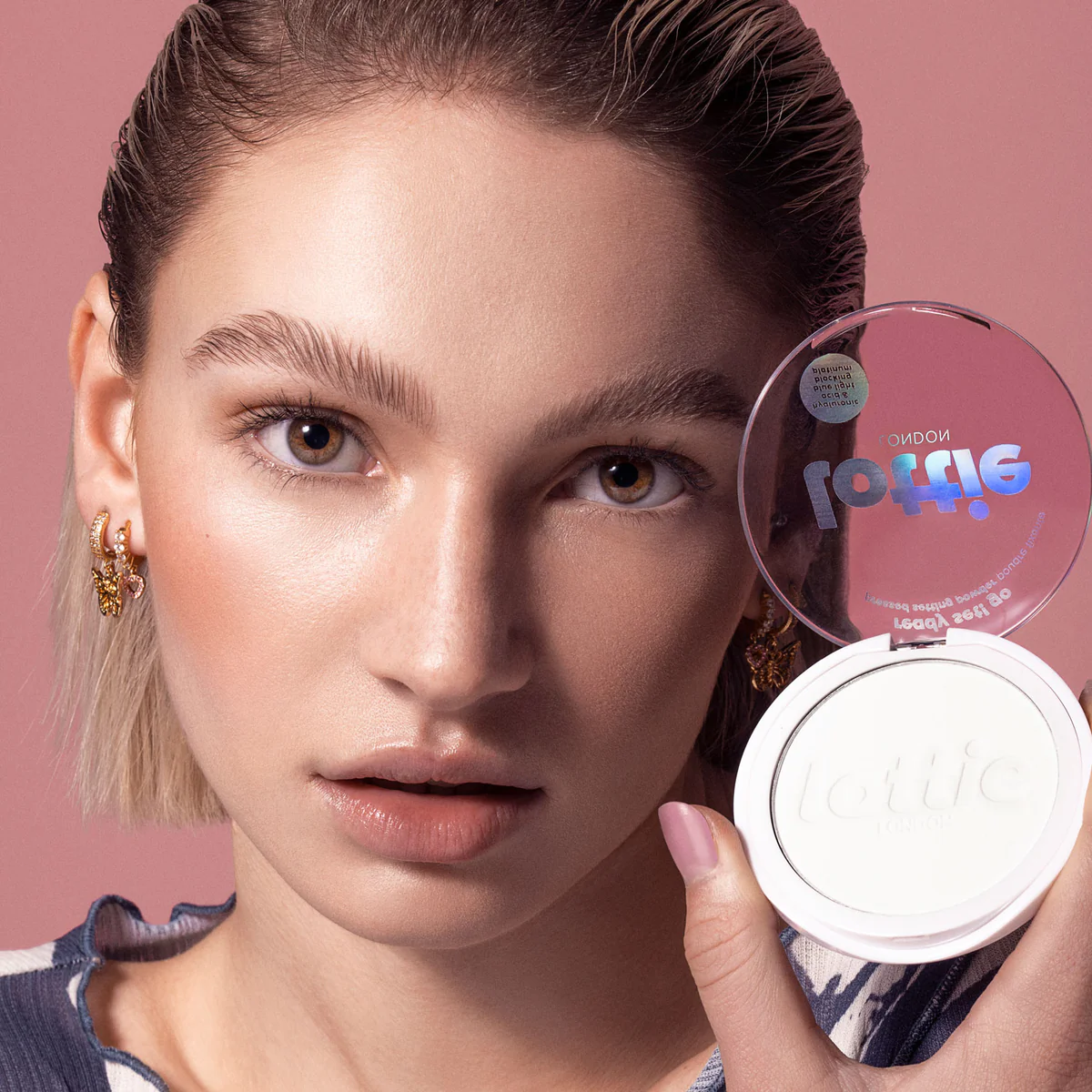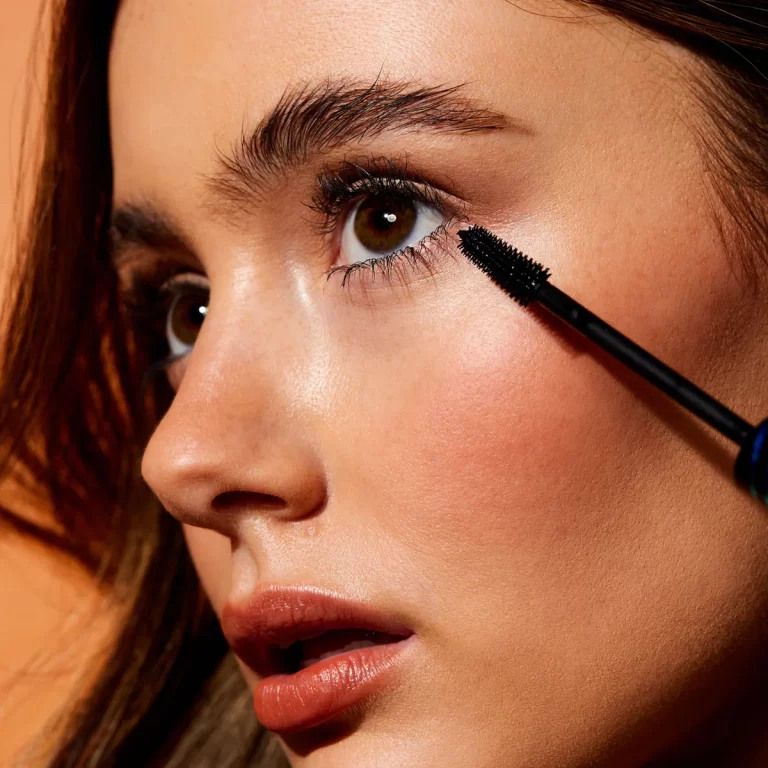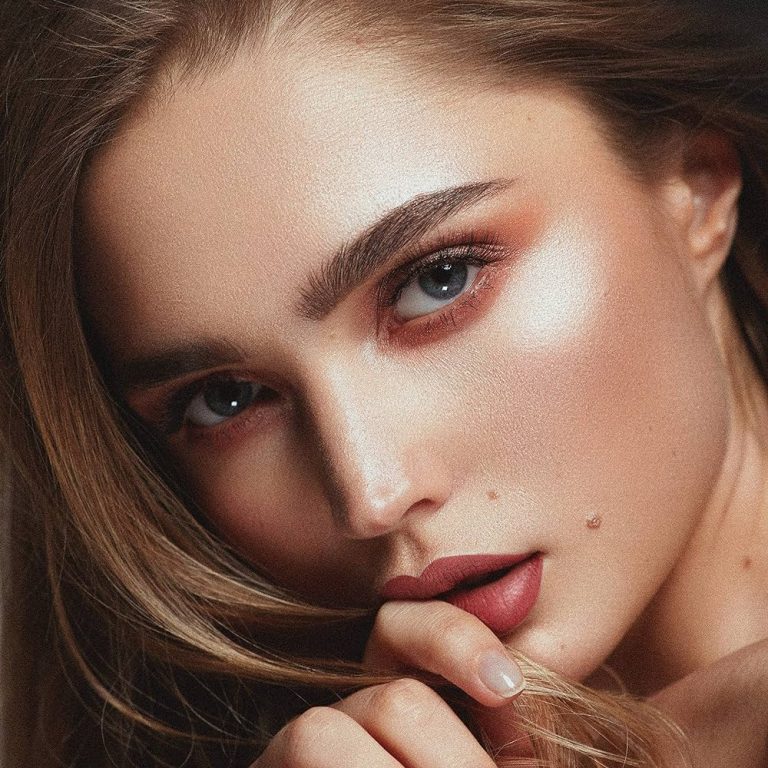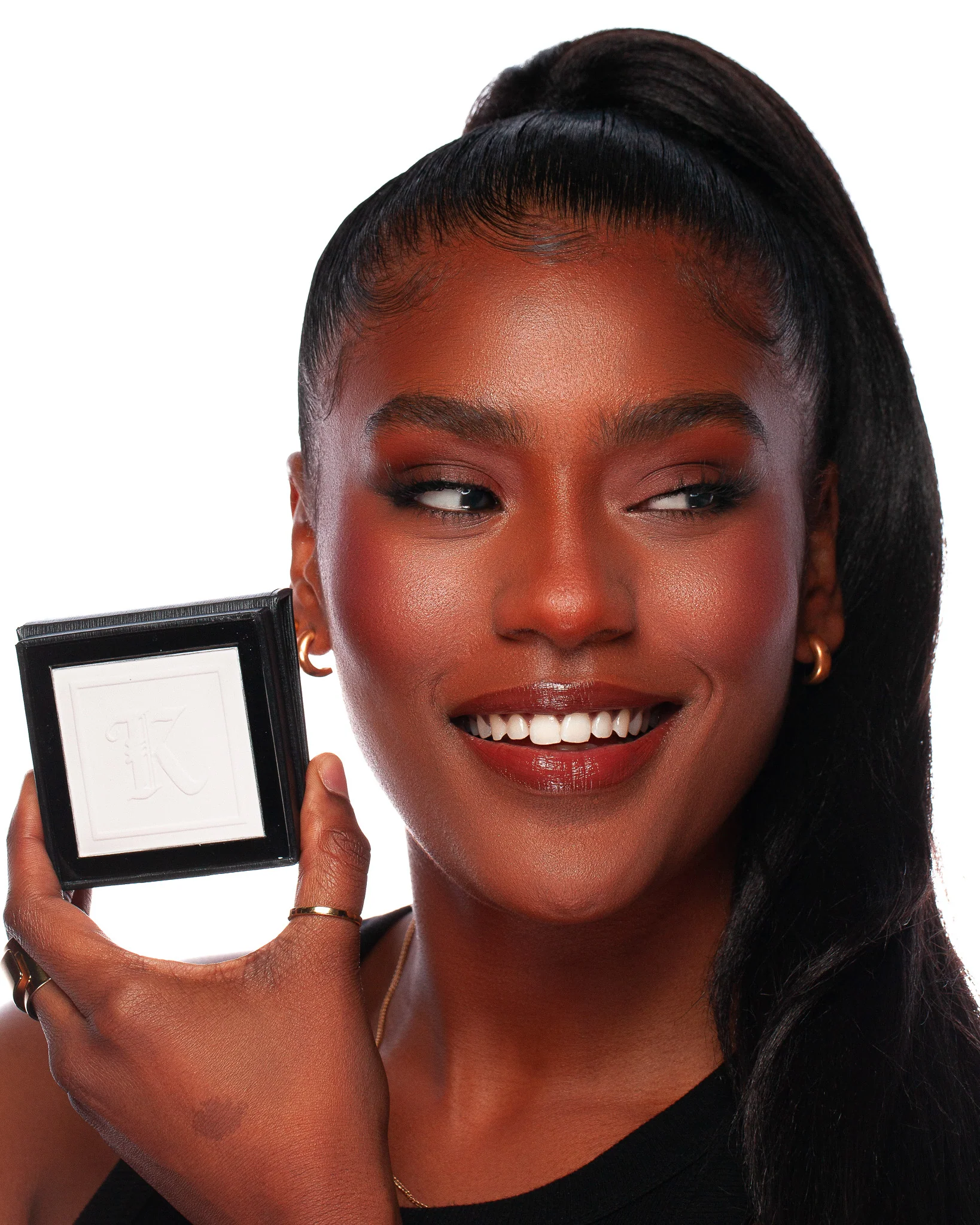
Press powder
Mastering the Distinctions and Maximizing Their Roles in Your Makeup Arsenal
A. Delving into the World of Powders in Makeup
Powders form an integral part of any makeup routine, providing a finishing touch that can transform your look from ordinary to extraordinary. However, not all powders are created equal. The distinction between press powder and setting powder is crucial for anyone seeking a polished, long-lasting finish. This blog post aims to clarify these differences and empower you to make informed decisions based on your unique skincare needs and preferences.
B. What Lies Beneath: Understanding Pressed Powder
Pressed powder, as its name suggests, comes in a compact form with a solid, densely-packed consistency. It’s usually applied using a sponge or brush, offering a portable solution for quick touch-ups throughout the day. This versatile product serves multiple purposes:
1. Long-Lasting Wear
Press powder excels at providing long-lasting wear. It effectively sets foundation and concealer, locking in your base makeup and ensuring it stays put for hours without melting or fading. This feature is particularly beneficial on hot, humid days or during lengthy events where you want your makeup to look fresh all day.
2. Oil Control
With its absorbent properties, pressed powder actively controls shine by soaking up excess oil from the skin’s surface. This helps to maintain a matte finish, especially for those with oily or combination skin types, thus reducing the need for frequent touch-ups.
3. Buildable Coverage
Depending on the formulation, pressed powder can provide sheer to medium coverage. You can apply it lightly for a natural, translucent effect or build it up to cover minor imperfections and even out skin tone. This adaptability makes it suitable for different skin types and desired makeup looks.
4. Convenient and Portable
Press powder come in compact cases, making them easy to carry around and use on-the-go. They’re less messy than loose powders, as there’s no risk of spillage, which is ideal for travel or quick touch-ups throughout the day.
5. Blends Seamlessly
The fine texture of press powder allows it to blend effortlessly into the skin, creating a smooth, unified appearance. It can be used to subtly enhance or completely transform your look without leaving behind any harsh lines or cakey buildup.
6. Versatility
Press powder isn’t just for setting makeup; it also doubles as a standalone product for those who prefer a lightweight, natural look. Some formulations contain skincare ingredients like SPF, antioxidants, or hydrating agents, offering additional protection and care while enhancing the complexion.
7. Easy Application
Applying pressed powder is simple and straightforward. Whether using a brush, sponge, or a powder puff, it distributes evenly over the skin, allowing for precise application and control.
C. Unpacking the Power of Setting Powder
Setting powder, on the other hand, is designed with a specific mission in mind—to lock in your makeup and extend its wear time. Often translucent or color-correcting, this lighter, finely-milled formula works wonders:
1. Sets and Extends Makeup Wear
A primary function of setting powder is to actively set foundation and concealer, preventing them from smudging or transferring. It forms a protective barrier that ensures your base makeup stays in place all day, providing long-lasting coverage and wear.
2. Controls Shine
Setting powder is particularly effective at combating excess oil production on the skin. It absorbs oils without stripping moisture, maintaining a matte finish throughout the day. This attribute is especially beneficial for individuals with oily or combination skin types who seek to avoid midday shine.
3. Blurs Imperfections
With a light dusting of setting powder, fine lines, pores, and texture can appear visibly softened. It works by filling in these areas, creating a smooth, airbrushed effect that enhances the overall appearance of the skin.
4. Enhances Foundation Wear
Setting powder complements foundation by increasing its longevity. It reduces creasing and settling into fine lines, ensuring that your complexion looks flawless for longer periods.
5. Reduces Transference
When used as part of a makeup routine, setting powder decreases the likelihood of makeup rubbing off onto clothing or other surfaces. This quality makes it ideal for events where you might be in close contact or wearing special attire.
6. Allows Layering Without Cakiness
Setting powders have a lightweight texture that allows for multiple applications without adding weight or buildup to the skin. This enables users to touch up their makeup throughout the day without looking cakey or overdone.
7. Variety of Finishes
Available in different finishes – translucent, tinted, or color-correcting – setting powders can be tailored to individual needs. Translucent options work universally across skin tones, while tinted ones can provide extra coverage, and color-correcting powders help neutralize discoloration.
8. Versatility
Setting powders are not limited to facial use; they can also be employed to set cream eyeshadows, blushes, and even lipstick, improving their longevity and reducing smudging.
In conclusion, setting powder plays an indispensable role in perfecting and extending the life of your makeup, controlling oil, blurring imperfections, and offering versatility in application and finish. Its ability to maintain a fresh, polished look throughout the day makes it a staple item in every makeup enthusiast’s arsenal.
Parsing the Parallels and Contrasts
Comparing the two, we find distinct differences in their formulations and functions:
A. Formulaic Nuances
1. Texture Tango: Pressed powder boasts a denser texture compared to the featherlight, finely-milled feel of setting powder, which easily melds into the skin.
2. Ingredient Insight: Ingredients in each powder are tailored to their specific function; while pressed powder often contains oil-absorbing components, setting powders may have more silica-based ingredients for a soft focus effect.
B. Functional Finesse
1. Divergent Objectives: While setting powder prioritizes longevity and a perfected finish, pressed powder multitasks as both a touch-up tool and a provider of additional coverage.
2. Skin-Type Synergy: Although setting powder caters to a broad range of skin types, pressed powder might be more targeted towards specific concerns like oil control.
Picking the Perfect Partner for Your Skin
When choosing between pressed powder and setting powder, consider these key factors:
A. Personal Profile
1. Skin Type: Oily skin may favor the oil-absorbing properties of pressed powder, whereas dry skin might appreciate the non-drying effects of setting powder.
2. Coverage Needs: If you’re after a light veil, setting powder could suffice; however, if extra coverage is desired, pressed powder is the way to go.
3. Lifestyle Factors: Think about how frequently you need touch-ups during the day and whether you prefer a minimalist or comprehensive makeup regimen.
B. Harmonizing Both in Your Routine
Blend both powders into your beauty arsenal by using setting powder to initially set your base, then rely on pressed powder for on-the-go touch-ups and added coverage as needed.
Conclusion
A. Recapitulating the Core Differences
To summarize, understanding the core distinctions between pressed powder and setting powder empowers you to wield them effectively in your makeup routine, maximizing their benefits for a flawless, enduring finish.
B. Encouragement to Experiment
We encourage you to embark on a journey of experimentation, trying out different powders to find the perfect balance that complements your individual skincare needs and makeup preferences.
C. The Final Word on Powder Power
Ultimately, recognizing the unique role each powder plays is pivotal to achieving the enviable combination of a flawless, yet effortless, makeup look that lasts all day long. Embrace the versatility of these powders and let them work together harmoniously to enhance your natural beauty.
